The Treasury Historical Association donated to the Department a rare original relic - an 1862 photograph of Secretary Salmon Portland Chase. The image is important to Treasury in that it was used twenty years later by the photographer, Henry Ulke, to paint, posthumously, Chase’s official portrait. It is also the likeness that was used on the first one dollar bill printed in 1862 and the $10,000 bill in 1918.
In 1861, Salmon P. Chase resigned from the Senate to become President Abraham Lincoln’s Treasury Secretary. In his new position, Chase was faced with the formidable challenge of financing the Civil War. In order to do so, Chase implemented the Nation’s first income tax and developed a national currency, known as the “green backs” because of the color. Chase was the consummate bureaucrat and his official papers provide a record of his service in the Lincoln cabinet. In addition, Chase kept a diary to record his daily activities, offering a rare glimpse into the daily life of a key cabinet official.
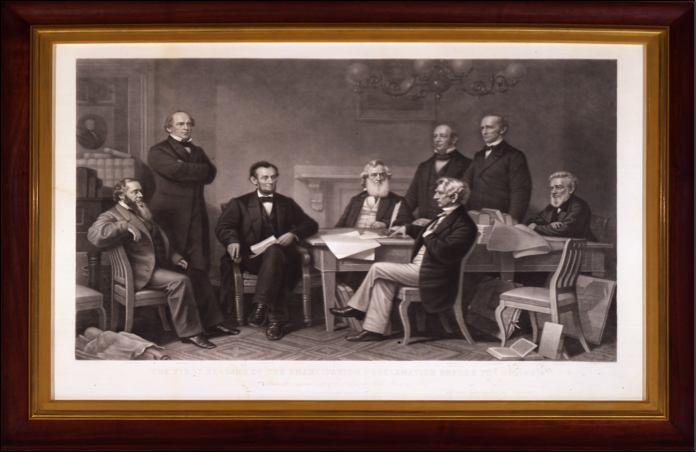
On January 6, 1862, Chase wrote, “In fulfillment of engagement with the President of the American Bank Note Company, went to Ulke’s, who took a number of photographs.” Three days later, Chase made another visit to Henry Ulke’s studio at 1111 Pennsylvania Avenue, noting in his diary, “Called at Ulke’s.” The purpose of the visits was to obtain a photographic portrait of Secretary Chase to serve as the basis for the engraving on the newly introduced one dollar bill. Henry Ulke was a photographer and portrait artist whose studio served Washington patrons at a time when photographers’ studios were highly popular.
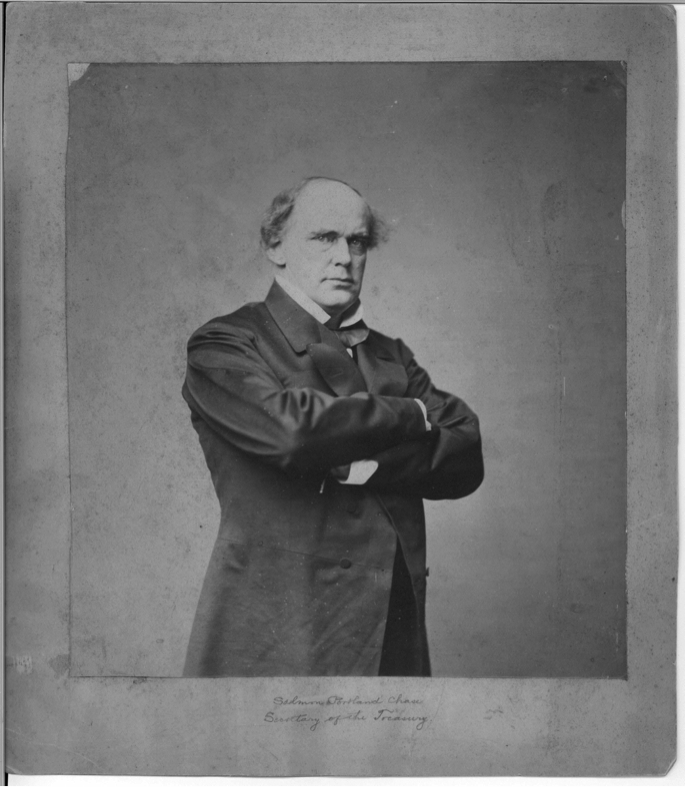
The notes were to be engraved and printed by the American Bank Note Company in New York, the predecessor firm to the Bureau of Engraving and Printing. Although the U.S. Government began to print paper money in 1862, the Bureau of Engraving and Printing actually began operations quite modestly in that year with only five clerks and a bureau chief, housed in the Treasury building’s basement. It was not until 1877 that the Bureau of Engraving and Printing became the exclusive printer of U.S. currency and securities, moving to the Treasury building’s attic.
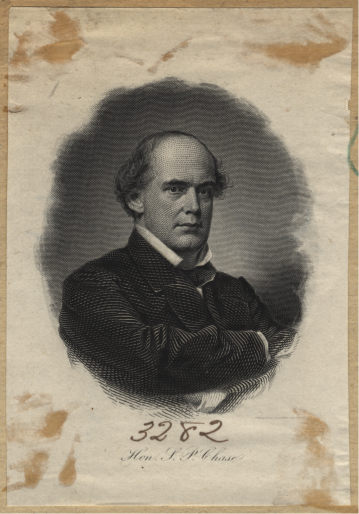
How Secretary Chase came to be portrayed on the one dollar bill is described in a pamphlet of his speeches, “Going Home to Vote.” Chase stated: “I went to work and made “greenbacks” and a good many of them. I had some handsome pictures put on them; and as I like to be among the people, and was kept too close to visit them in any other way, and as the engravers thought me rather good looking, I told them they might put me on the end of the one-dollar bills.”
Chase must have been favorably impressed with his dollar bill image because he had the same engraved image printed on his personal calling card. One surviving calling card bears Chase’s signature and the date, “Feby 11, 1862,” which suggests that the engraving for the banknote was produced within a month from when the image was taken at Ulke’s studio.
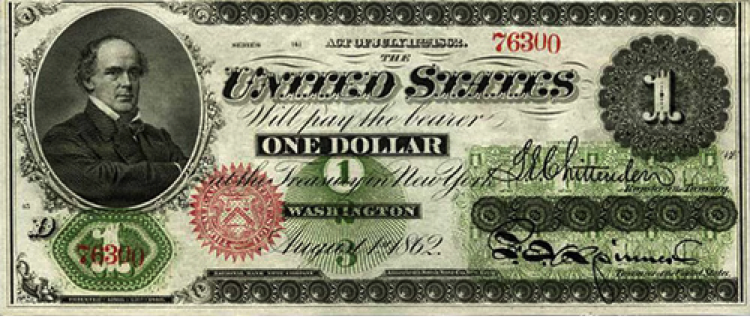
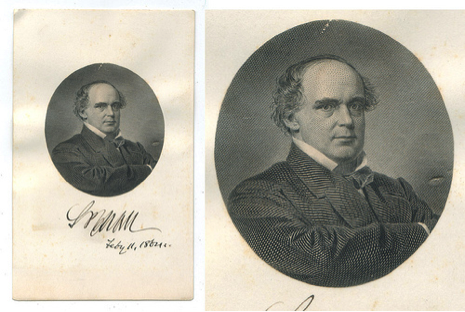
The same image of Chase, taken from the Ulke’s 1862 photograph, had one other iteration on national currency. The same portrait of Chase was put on the $10,000 bill which was printed between 1918 – 1946.
Treasury’s portrait collection was begun in 1879 by Secretary John Sherman after Chase’s death in 1873. As a local Washington, D.C. portrait artist, Henry Ulke received a number of Treasury portrait commissions. Still in possession of Chase’s 1862 photograph, he was the obvious choice for this Secretary’s official portrait which was painted in 1880. In executing the portrait, Ulke literally copied his photograph which has become Chase’s most famous likeness.
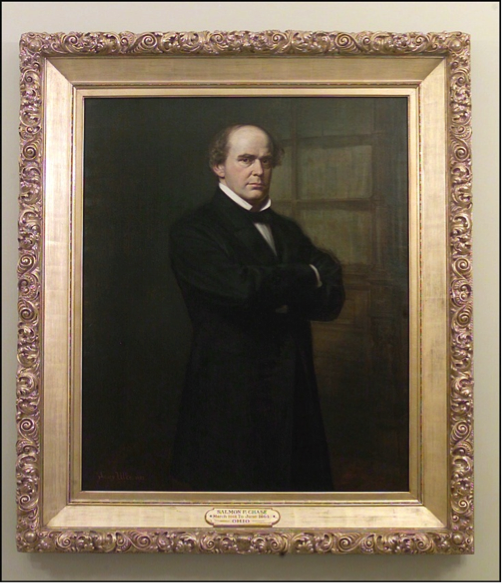
The photograph remained in possession of Henry Ulke’s family until it was sold at auction in October 2013 and was purchased by the Treasury Historical Association. It was donated to the Department in December, 2013, to serve as a record of the portrait’s source.
Richard Cote is the Curator at the U.S. Department of the Treasury
